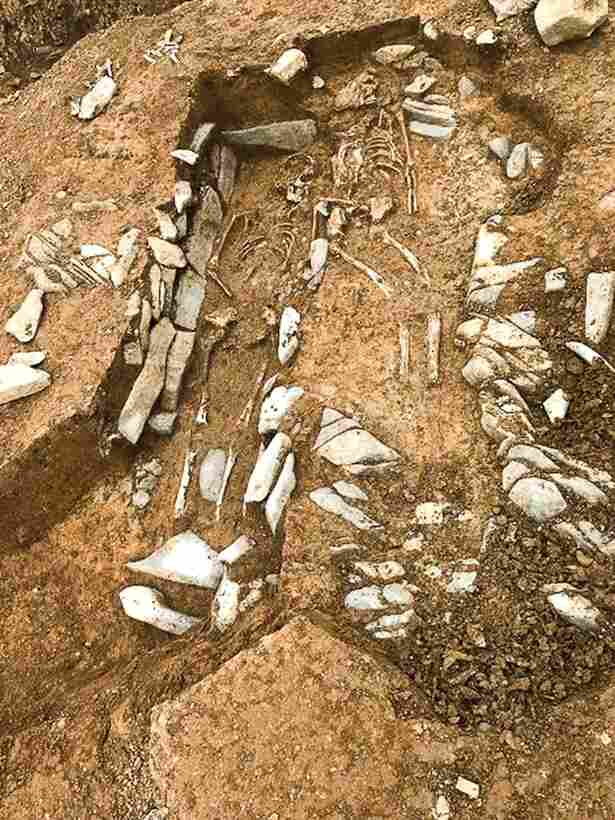Technology
Mind-blowing discovery leaves archaeologists baffled as human remains found in Wales

THE 2,000-year-old remains of a Roman mercenary have been found close to a newly built road in the Welsh countryside.
The mystery soldier-for-hire was buried with his sword and the skeleton of another Roman-era man whose decapitated head lay at his feet.
WNSThe remains of a Roman man have been discovered in Wales 2,000 years after his death[/caption]
They were discovered alongside Iron Age farming tools, ancient burial sites, and the remnants of roundhouses.
In total, archaeologists uncovered 456 skeletons from the site on Five Mile Lane near Barry, South Wales.
Five of the skeletons are believed to date to the Roman period, according to Rubicon Heritage, which led the expedition.
Archaeologists hailed the “significant and surprising” finds uncovered by workmen and date back around 2,000 years.
Read more about archaeology
Three sites were fully excavated on the roadside at Five Mile Lane, which has a history of human activity dating back to the Stone Age.
Archaeologist Mark Collard described the mercenary’s burial as “quite peculiar”.
He told Live Science: “It’s in the middle of a field near the Roman villa looking out over the valley and over the sea.
“It’s a great place to be buried.”
Most read in News Tech
The man was in his early 20s and stood at 5’9”. It’s unclear how he died, but he may have fallen victim to a middle-ear infection that spread to his skull.
The man was buried face-down in a nailed-shut wooden coffin. Hobnail boots, a long iron sword and a silver crossbow brooch were buried with him.
Five Mile Lane was first excavated in the 1960s when boffins unearthed Iron Age roundhouses a Roman villa.
An archaeological survey carried out ahead of roadwork at the site revealed that it had plenty more to offer bone-hunters.
The area was likely well-used over thousands of years because it’s close to the sea and boasts “rich farming land”, the team said.
During the late Roman period, Roman control broke down in the United Kingdom and the empire resorted to hiring mercenaries from Europe to defend its territory from invaders and British resistance.
According to Collard, the Roman skeleton found at the site may have been a mercenary or invader who lived in the villa previously found at Five Mile Lane.
A genetic analysis of his remains could shed light on where he came from, Collard added.
Council officials brought in Ireland-based archaeology firm Rubicon Heritage to manage the digs.
They were assisted by National Museum of Wales, Cardiff University, Cadw and the Glamorgan-Gwent Archaeological Trust.
Emma Reed of Vale of Glamorgan Council, said: “It’s great to learn that the archaeological study at Five Mile Lane has uncovered such a detailed history of the area.
“The scheme has uncovered fascinating and at times surprising remains, that help us to understand the shaping of the agricultural landscape that we see today.”
Mark Collard from Rubicon Heritage Services, said the company would be making an e-book of their work at the site.
He said: “It was a privilege for our team to have delivered a project which added so many new discoveries about the archaeology and history of the Vale of Glamorgan.
Read More on The Sun
“We’re very pleased to be able now to share the results in such an accessible format with the communities of the area.”
After they are analysed and documented, the artefacts will be given to the National Museum of Wales.
WNSIron Age farming tools and pottery were also discovered at the site[/caption]
Get all the latest Science newsKeep up-to-date with the top Space & Astronomy storiesAll the latest Archaelogy news from dinosaurs to Ancient artefacts
We pay for your stories! Do you have a story for The Sun Online Tech & Science team? Email us at tech@the-sun.co.uk